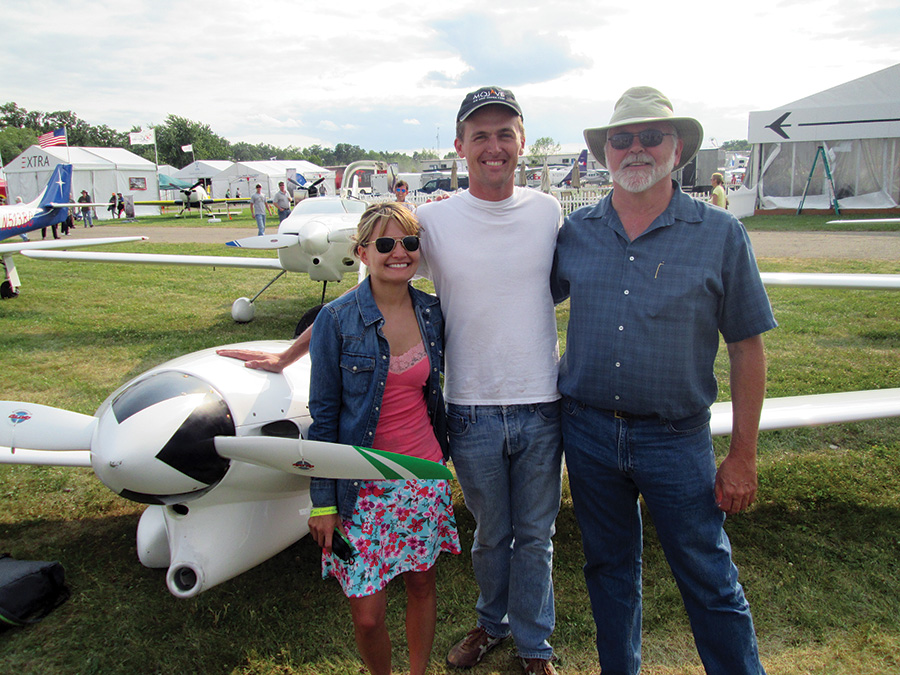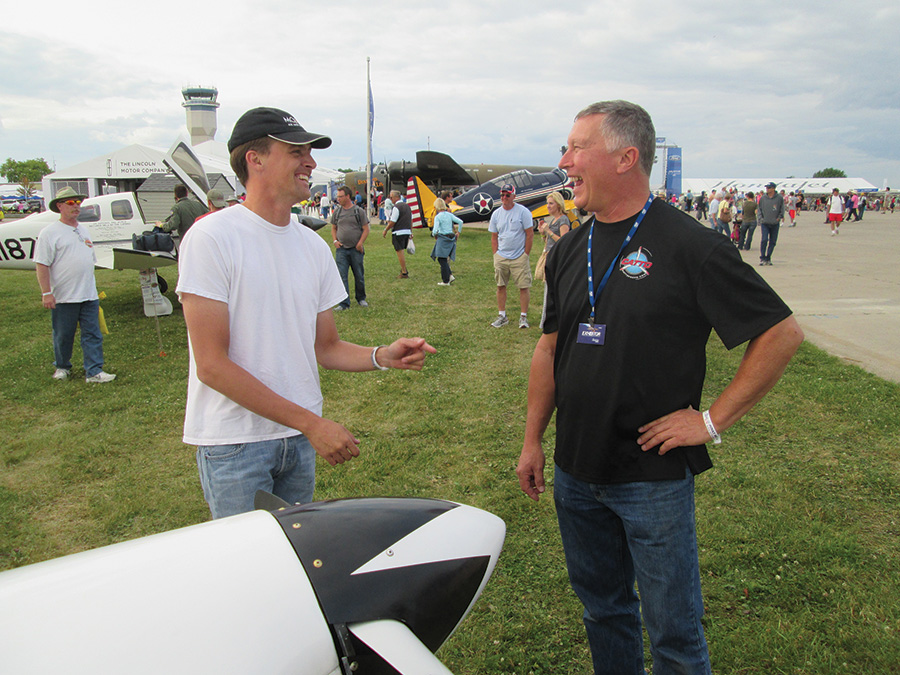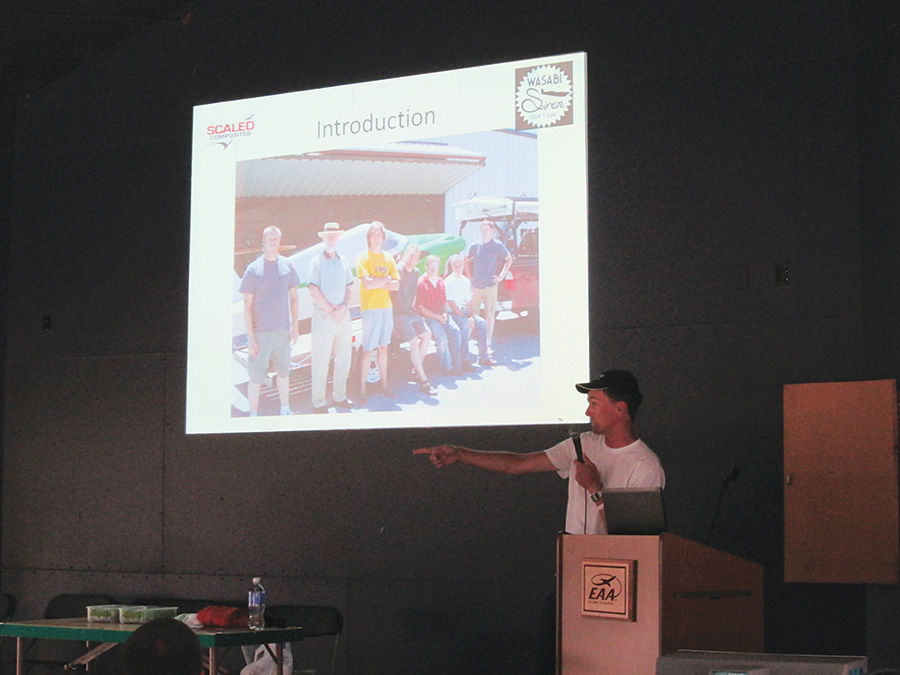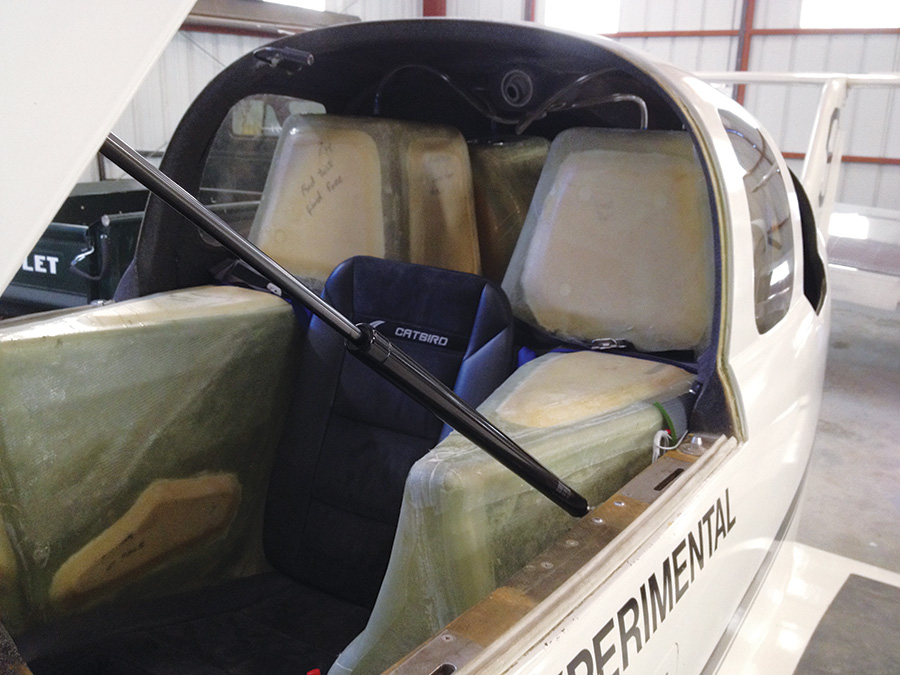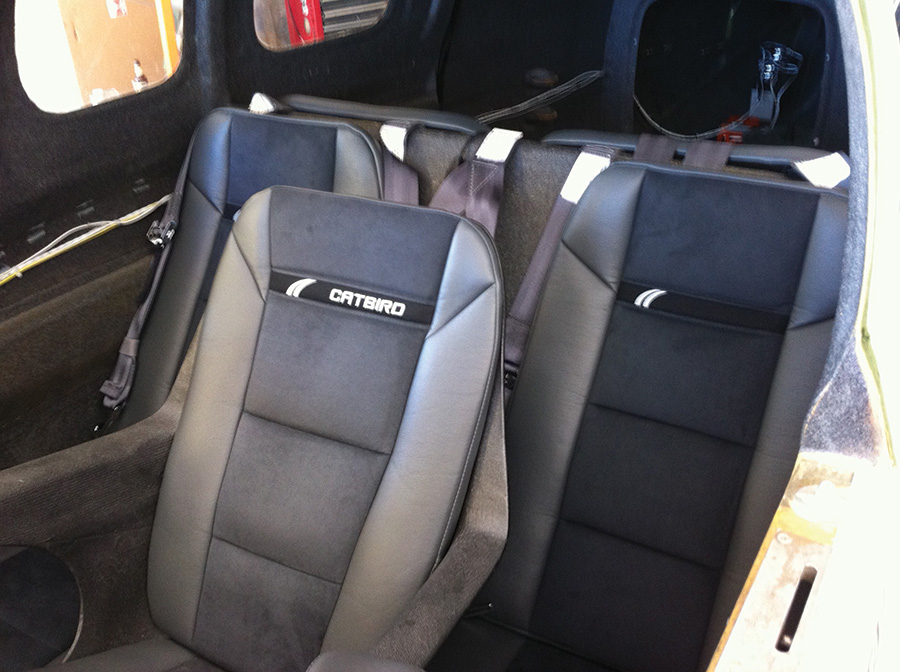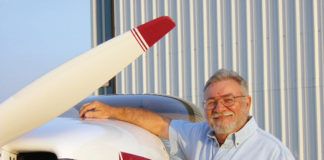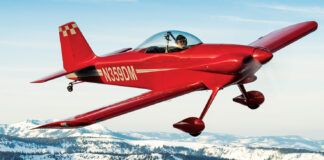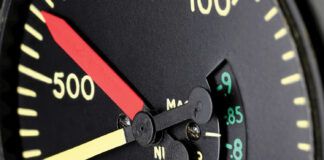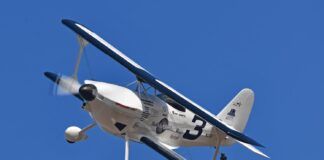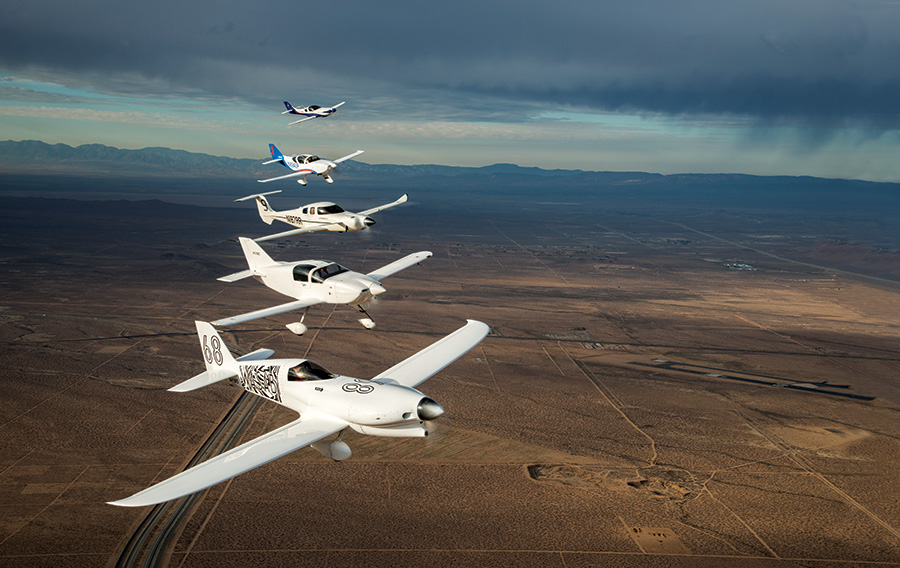
The Mojave Mad Monk Squadron (foreground to background): Elliot Seguin in Wasabi, Justin Gillen in a Tango 2, Zach Reeder in the Rutan Catbird, Doug Dodson in a Glasair II-S, and Brandon Cangiano in a Lancair Legacy. Also making the journey was Dustin Riggs in a Rutan Long-EZ.
If you follow the admittedly niche corner of extreme-performance Experimental aircraft, you might have gotten the feeling of late that there’s a whole lot of record breaking going on: Five aircraft set seven new world records at the 2014 Mojave (California) Fly-In, Chip Yates got into the books in both 2013 and 2014 with his electric Long-EZ, and Paulo Iscold’s Anequim looks set to make an attack on Jon Sharp’s 16-year-old Nemesis record later this year.
It’s unclear why there is so much activity now; probably some of it is part of a larger Internet-driven zeitgeist where news of records goes viral (if only for 15 minutes of fame) and blogs documenting the attempts quickly generate popular interest. Certainly one motivating factor has been an ambitious young engineer at the Rutan-founded Scaled Composites, Elliot Seguin. As organizer of the Mojave Experimental Fly-In, Seguin was more focused on helping others set records than doing so himself. Now though Seguin has stepped up to the plate and is ready to deliver a “record batted in” himself in his self-designed and -built Formula 1 Racer Wasabi.
Seguin and five fellow “Scalies” (Scaled Composites employees) hatched up the plan to fly more than 1700 miles non-stop Mojave to Oshkosh back in June. The “Mojave Mad Monk Squadron” consisted of Brandon Cangiano in a Lancair Legacy, Doug Dodson in a Glasair II-S, Justin Gillen in a Tango 2, Zach Reeder in the Rutan Catbird, Dustin Riggs in a Rutan Long-EZ, and Seguin in Wasabi.
Gillen and Dodson served as Seguin’s outrunners during the flight, probing different altitudes for the best wind and weather conditions. Cangiano and Reeder, in faster ships, left an hour later and rendezvoused with Seguin et al. over La Crosse, Wisconsin. Riggs had a fuel leak that he was able to fix, but had a late start and landed shortly after the rest of the squadron reached Oshkosh.
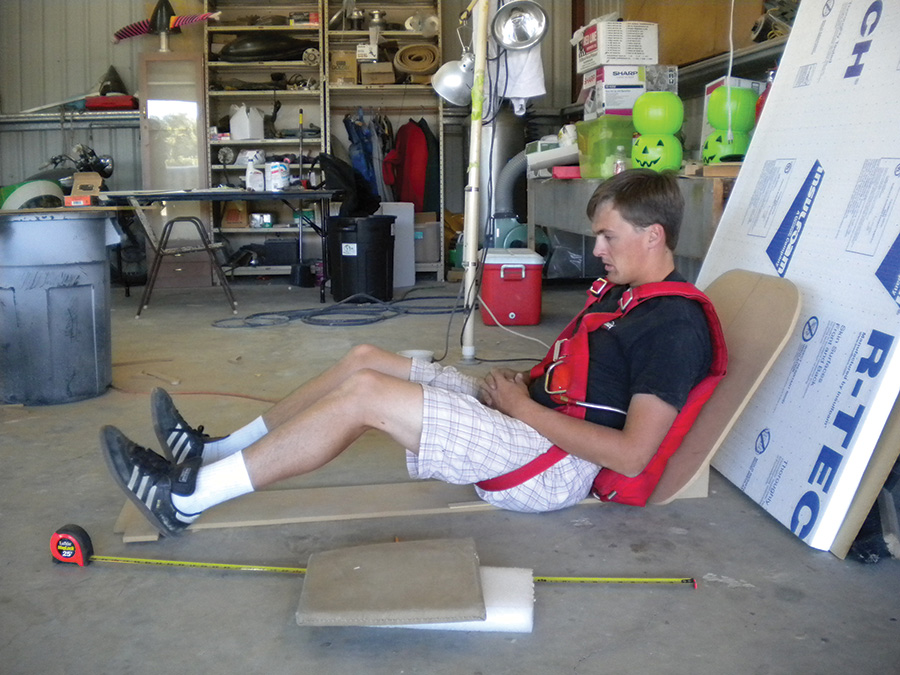
Elliot mocking up the cockpit of the Wasabi. Experience with his previous racer, a Cassutt, drove home the importance of good ergonomics in cockpit design. (Photo: Jennifer Whaley)
KITPLANES caught up with Elliot after the record flight to find out more.
KITPLANES: Elliot, what is your educational background? How long have you been at Scaled Composites?
Elliot Seguin: I grew up in Michigan and received a BS in mechanical engineering from Union College in Schenectady, New York. I’ve been at Scaled for nine years and have done tooling, assembly, cockpit layout, systems layout, propulsion, and have approximately 200 hours flying L/R seat testing Scaled vehicles.
KP: How did you get into engineering and flying?
ES: I started on my PPL when I was 14, but the school shut down shortly after my solo. The closest school was two hours away, so my dad and I spent a year and a half restoring a derelict Cessna 150, which I used to get my license. This led to work on Stearmans and T6s.
When I was in engineering school, I was working summers building radial engines, and it was just about the coolest thing I had ever done. I remember coming home one night feeling pretty proud of a W-670 that I’d gotten running real well. My dad had a way of using a moment like this and pointed out that it didn’t make much sense to get an engineering degree if all I wanted to do was work on 50-year-old stuff. “You don’t want to work in a cubicle farm,” he said, “but maybe there is an engineering job closer to what you are doing now.” So I made a list of the coolest aero-engineering companies I could think of, and when I saw that a high concentration were at Mojave Airport, I flew myself out to see more. I saw SpaceShipOne, the Rocket EZ, the GT 400-and I was sold. I came back the following summer to intern for Xcor Aerospace on the Rocket EZ. The summer after that, I was working for Scaled Composites on SpaceShipTwo.
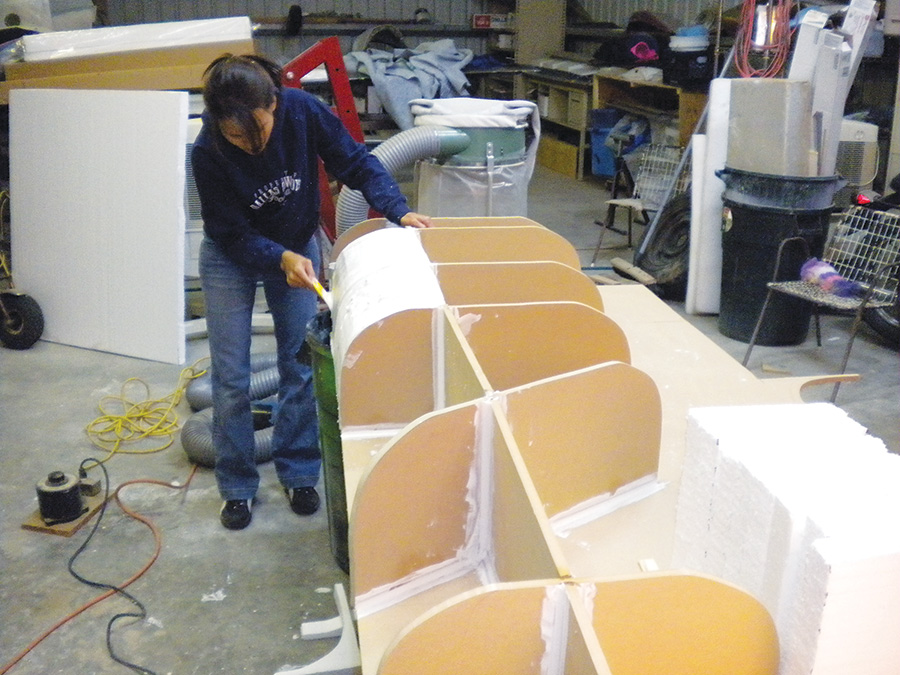
Wasabi’s crew chief, Jennifer Whaley, helping fabricate the male plug for the fuselage mold. (Photo: Elliot Seguin)
KP: What inspired you to set a record in Wasabi? And why the closed-course route Mojave-to-Oshkosh?
ES: Several years ago I was tasked by a client to look at the records he could set with his airplane. After going through the obvious records (absolute speed, absolute distance, and altitude), I became interested in point-to-point records. I started thinking about aviation pilgrimages, especially ones beginning in Mojave. Two in particular came to mind: Mojave to Reno-Stead, and Mojave to Oshkosh.
There is currently no point-to-point record for Mojave to Oshkosh. I kept thinking about how for years Burt Rutan [Scaled Composite’s founder] was designing a new airplane every year, and how he had to take those airplanes to Oshkosh so people could see them. And thinking about Gene Sheehan crossing the Rockies in a Quickie Q1 under lawn-mower-engine power. And Dick Rutan debuting the Voyager. And Burt riding in SpaceShipOne under WhiteKnight. These are significant achievements in the history of aviation that also hold a link to Mojave, and I wanted to contribute to that legacy.
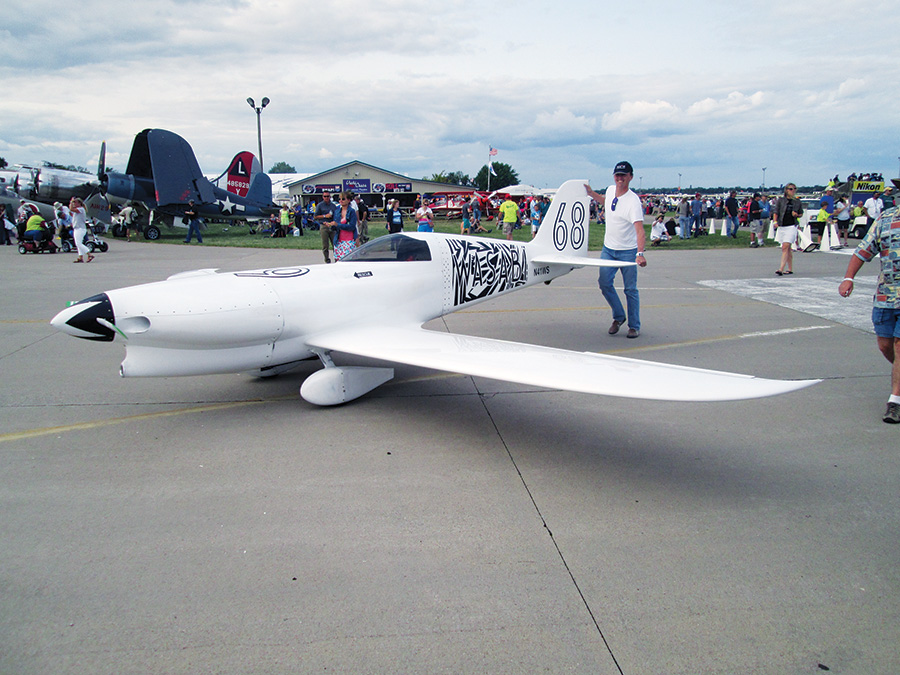
Elliot wheels Wasabi into pride of place on Boeing Plaza, where the Mo’Venture gang was parked during the week.
KP: Tell us a bit about Wasabi. It’s a Formula 1 racer, correct?
ES: Yes, Wasabi is an F1-this is the “builders’ class” at Reno. The rules are organized to facilitate regular guys designing and building airplanes in their garages-think EAA. There is a minimum empty weight (500 pounds) and minimum wing area (66 square feet). The engine is a carbureted, unmodified O-200.
I purchased a partially built Cassutt racer in 2007, which we were able to race at Reno 2008. Our lap speeds improved from 150 mph to 187 mph by Reno 2009. Based on our experience modifying the Cassutt, I had confidence that I could do the engineering, manufacturing, and testing required to make an airplane go. Coming from Mojave and Scaled Composites, the Holy Grail is to have designed and built your own airplane.
KP: Your girlfriend, Jennifer Whaley, has been an integral part of Wasabi, right?
ES: Yes, Jenn and I built Wasabi together. She is our crew chief and has time in a variety of Experimentals. I rely on her to help me manage the risk of any given flight. At Scaled she works with the test pilots, so she knows how to deal with the egos and pressures of flight testing.
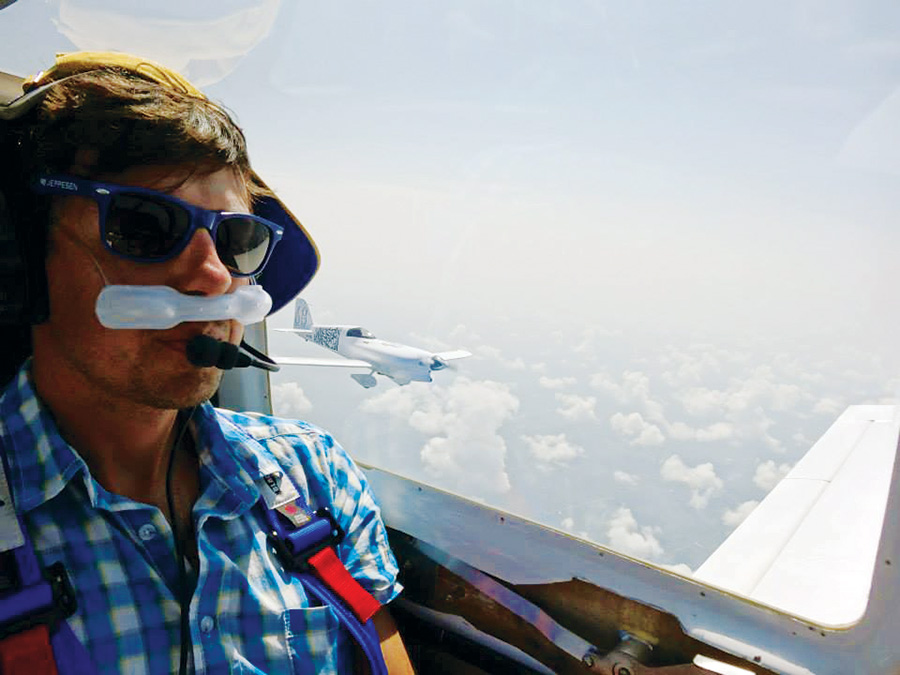
Due to the high altitudes necessary for economy and weather avoidance, the Mo’Venture crew was on O2 for the majority of the flight. (Photo: Jennifer Whaley)
KP: Given that a typical F1 race is about eight minutes, what was involved in converting Wasabi to a cross-country ship?
ES: It turns out racing airplanes are pretty silly. I have a total loss electrical system (i.e., a system in which the battery power is not somehow recharged during flight, typical in Formula 1 racers trying to save weight) with no starter. I need a special pump to put fuel in the airplane through a custom fitting. I can’t close the canopy from the inside. And I only have eight gallons of gas! Flying the airplane to Oshkosh was starting to look like a real pain: I would be turning the radio off to save battery when away from airports. I would be landing every 150 miles, and after refueling, I’d have to find someone and beg them to hold the tail while I propped the plane, then have them install the canopy so I could fly 60 minutes and do it all over again.
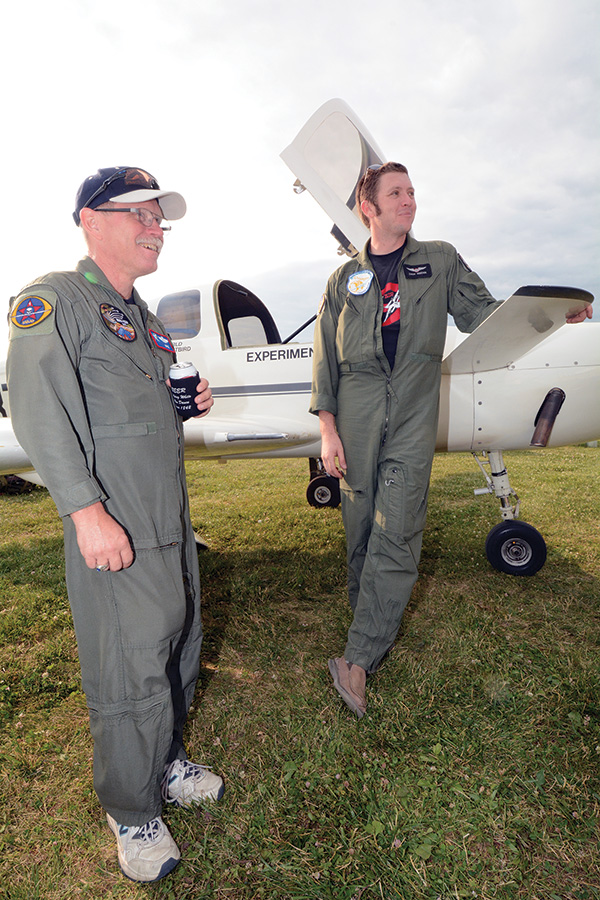
Doug Dodson (L) and Zach Reeder (R) in front of Catbird. The fact that both are still in their jumpsuits indicates how mild the temps were at AirVenture 2014. (Photo: Tom Wilson)
So the first step was to increase range. I tripled battery capacity and increased fuel capacity by a factor of eight by making a wet wing. We test-flew the airplane in that configuration and realized that the fuel transfer pumps were drawing enough current to necessitate installation of an alternator. Finally, we turned to human factors and installed an oxygen bottle, a relief tube, and space for food and water.
Fuel in the cockpit is pretty terrifying, especially with all the other stuff that is in there now. There was a lot of chasing of fuel leaks, trying different gaskets and gasket sealers. Pre-record flight tests focused on confirming predicted fuel economy at the higher takeoff weight, as well as general handling qualities with such a large amount of fuel.
KP: Let’s talk about the flight. Weather is the big question on such a long distance flight. Did you have to divert?
ES: Yes, at Vegas we had to divert south. We thought that was going to cook us because it added 20 minutes, and we were afraid we’d miss our allotted time slot for landing during the airshow. But just after we reached the Rockies, we picked up a 10-knot tailwind and made it all back.
KP: How many gallons did you land with?
ES: Based on my calculations I still had about 20 gallons onboard. I was burning about four gallons an hour. I have an eight-gallon header tank marked in one-gallon increments. I burned to a line, pumped back up, and counted how many times I did that. Every 10 gallons I took a time stamp to estimate range. It was a point-to-point record, so we just had to get here-speed was not the goal. Total flight time was 10.5 hours, including a 25-minute hold for the airshow.
KP: At Reno Wasabi is over 200 knots in the straightaway at 50 feet agl. What were your airspeed and altitude for this flight?
ES: We flew at 155 knots at 15,500 feet. We had planned 17,500 feet, but one of the other planes was concerned about oxygen, so we flew a bit lower. RPM was between 2550 and 2650, and engine cooling was good. In fact the lowest oil temp I saw was 149 F.
KP: Did you run into any performance issues with the expanded gross weight?
ES: During testing we confirmed that as we added weight to the airplane, CG was constant and the airplane was controllable in pitch, which we expected. The thing we weren’t sure about was whether we would have enough roll and directional [yaw] control to make up for unbalanced fuel distribution in the wet wing.
What you find is that since the airplane has almost no dihedral effect, once you are flying and get the ball off center, that wing fills with gas and there’s a reverse dihedral effect from a heavy wing. Centering the ball doesn’t immediately fix the problem due to baffles slowing the flow of fuel from side to side. So you center the ball, attend to something else, and come back to find some of the roll forces gone, but the ball off center again. You repeat this and the whole damping process takes several minutes. You can be cruising along, but if you divert your attention to change radios, for example, you find yourself kittywampus again pretty quickly. It obviously did get better though as the day went on and we burned off fuel.
KP: How did you like flying as a group? Was everybody chatting over the radio?
ES: Flying as a group was awesome-that was the part I was most excited about. In competition like at Reno, there can be a lot of hush-hush secrecy, but here, everybody was rooting for each other. We all rendezvoused at the Mississippi River and flew the rest of the way in formation. That is hard to pull off!
With the prop supplied by Catto Propellers, I was about 15 knots faster than expected. But this is a silly airplane for solo cross-country-I was relying on a tablet for my nav, alertness was an issue due to sleeplessness the night before the flight, and the battery can’t quite make the whole trip. So I just hung with the group. This airplane has never taken off at one airport and landed at another, and we just did nonstop Mojave to Oshkosh! I figured just making it was plenty good; speed was not a big concern.
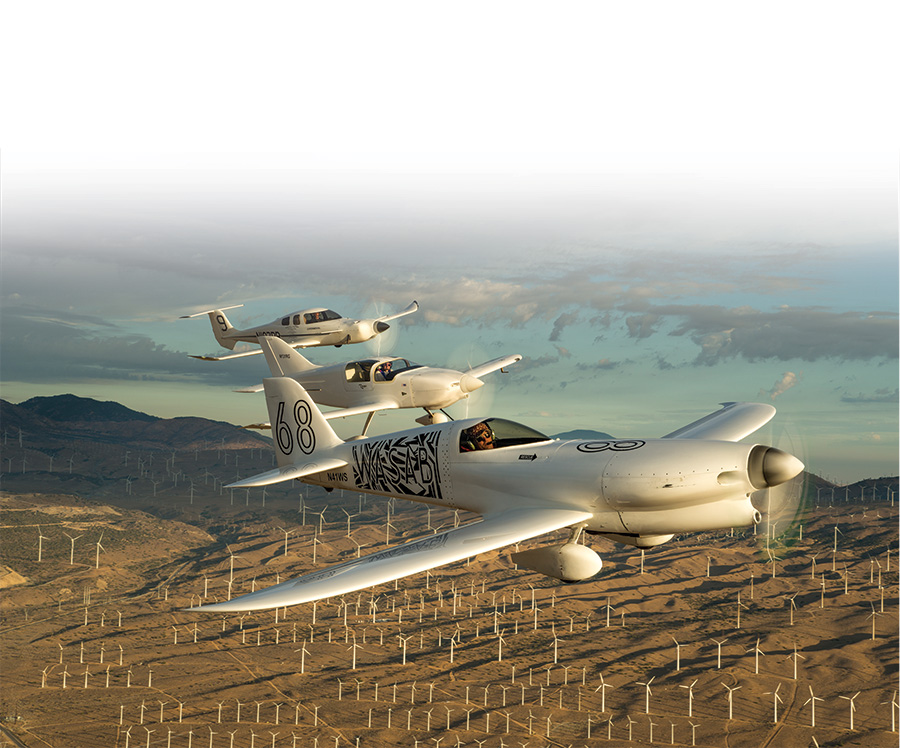
Elliot Seguin in Wasabi, Justin Gillen in a Tango 2, and Zach Reeder in the Rutan Catbird above a wind farm near Mojave.
KP: Any snafus besides weather?
ES: As I said, I wish I could have slept better before the flight-I maybe slept 45 minutes. I was really worried about the takeoff, being that heavy on the landing gear. Robby Grove, our gear sponsor, assured me that all would be well, and indeed, the gear was awesome. It handled great. I used quarter-power for the first third of the runway, then half-power to break ground. I then slowly added in power, careful to keep everything under control because I was really worried about directional control excitation. This airplane does not have a lot of rudder control, I do not have a steerable tailwheel, and the brakes could be overwhelmed because the wheels are pretty close together. But we have a 14,000-foot runway at Mojave, so you do have time to sort it out.
KP: Did you do anything like math exercises to make sure your brain was working at altitude?
ES: I’m a big fan of the pressure-breathing trick that Zach Reeder has used climbing Kilimanjaro and other peaks. The concept is that you can’t get enough oxygen in your lungs at altitude because there is not enough partial pressure to push it through the cellular wall. If you pressurize the lung, just like you would with a mask, you can actually push the oxygen through. Just recently we started experimenting on this with a pulse oximeter-you just purse your lips and blow out several times. Sometimes being in the cockpit is like being in prison: You have infinite time to experiment and build things out of masking tape and paper clips, as it were.
KP: How comfortable was the cockpit for such a long flight?
ES: The geometry is perfect, since the plane was built around me. I didn’t get soreness in my rear, so much as after seven or eight hours, you want to move your legs. But temperature-wise, I was freezing. I was fantasizing about sweaty Wisconsin weather and bratwursts. [Seguin wore a t-shirt and jeans for the flight]. I couldn’t decide beforehand if I was going to get baked by solar radiation or frozen by altitude. We had cloud cover over us for a lot of the trip, so a couple of times I jumped up to 17,500 so I could get sunshine in the cockpit. The sun shone in from the right side of the cockpit, so my left arm was warm, but my flying hand was cold and shaking.
KP: I understand you had a bit of help from sponsors for this flight.
ES: Absolutely! The generosity of our sponsors helped make this flight possible. Rick Poe and Susan Fine donated a cruiser engine to fly to the show. Craig Catto designed and built a high-efficiency prop for the flight. Robbie Grove provided landing gear and brakes, as well as feedback on their use at the expanded gross weight. MGL provided avionics support, including navigation and fuel flow. Spot provided a tracking device to enhance personal safety. Dave Ronneberg donated an oxygen system, and Donald McMullin was a great source of support for our program.
KP: Last but not least: Did you set a record? Was it expensive?
ES: The application is under review by the FAI, but yes, it appears we did set a point-to-point record of 260km/h. Setting a record is not cheap-FAI fees for absolute records requiring an NAA official run about $5-7,000. This, of course, was the idea behind all the records set at the Mojave Experimental Fly-In this year. We got Brian Utley [one of the NAA’s official record observers] out to Mojave and kept him for a week and were able to split the fee five ways. However, for point-to-point records, no NAA official is necessary and the fees are much cheaper-about $500.

